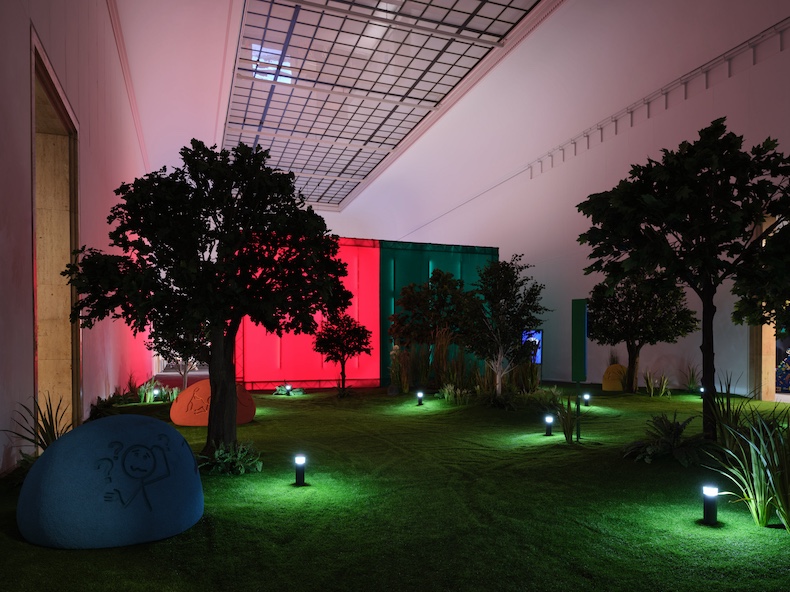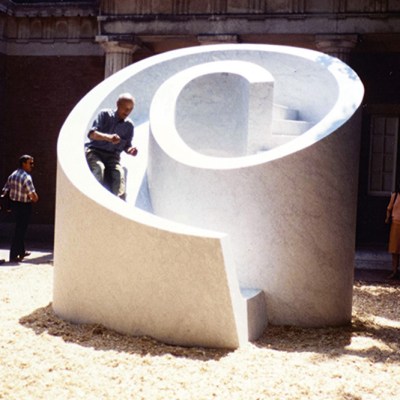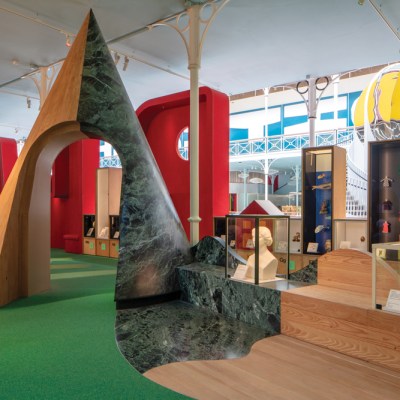Adult visitors to the 35th Venice Biennale in 1970 might have been surprised to encounter, among the various national pavilions showing the international art of the time, activities specifically designed for children. In the German pavilion, workshops allowed young people to touch and interact with work by Heinz Mack and Günther Uecker. A makeshift bridge over the perimeter fence, made of cardboard boxes, enabled free access for local children. These events and others, grouped under the title Biennale Bambini (Children’s Biennale), were organised by the Munich-based art education collective KEKS (Kunst, Erziehung, Kybernetik, Soziologie; Art, Education, Cybernetics, Sociology). Its short-lived period of activity at the turn of the 1970s is a touchstone for the exhibition ‘For Children: Art Stories since 1968’ at the Haus der Kunst in Munich. Tracing the emergence and development of art made for or with children in the last 60 years, the show identifies a reorientation of the relationship between art and its audiences. It’s a shift worth noting. After all, few art lovers in 2025, time-travelling to 1970, would bat an eyelid at KEKS’s interventions. Interactivity, participation and play are now such mainstream ideas in contemporary art – and children and young people so central to its audience – that the notion of an art space or exhibition designed without young visitors in mind would seem pretty backwards. In short, the kids won.

Appropriately, ‘For Children’ eschews a single visitor route and even a single mode of viewing. The contemporary art connoisseurs who surrounded me on my visit were running, skipping, climbing and tumbling through the various exhibition spaces, as their accompanying adults read the wall texts obediently. In the austere central hall of the museum, a work by Ei Arakawa-Nash, titled Mega Please Draw Freely, transforms the floor into a riot of multicoloured scribbles, thanks to buckets of crayons to which visitors are invited to help themselves (UK-based readers may remember this piece being on show in the Tate Modern Turbine Hall in 2021). The work encapsulates one of the main themes of the exhibition, the institutionalisation of creative play, since it is a reimagining of Gutai artist Yoshihara Jirō’s work Please Draw Freely, originally staged in Ashiya, Japan, in 1956, in which children and adults could scrawl at will on a board installed in a public park. Compare a photograph of kids doodling calmly in 1956 with the scenes of wild decorative abandon in every available inch of the Haus der Kunst floor in 2025 and you have, in miniature, a story of cultural transformation.

‘For Children’ continually stages such shifts between past and present. Parachute, a little-known piece from 1973 by Ana Mendieta, made in collaboration with students at the Henry Sabin Elementary School in Iowa, is a seven-minute film in which participants, huddled under a parachute in an empty car park, move in harmony, creating as they do a graceful, somewhat aquatic performance. Shot in grainy black-and-white from an upper window, the work is playful and a little melancholy. The huge adjoining installation here, Jardin synthétique à l’isolement (2014) by Antoine Catala, feels like a grand extrapolation of Mendieta’s ephemeral project. It consists of a garden of rolling artificial hills, which is studded with large boulders emblazoned with pictograms standing for verb forms – to move, to group, to listen, to make – often used in teaching children on the autism spectrum. In these and other works in the exhibition, the term art feels belated: an adult word for a way of knowing the world that children already instinctually understand.

The exhibition’s proposal, then, is that childhood’s intense period of research and development, upon which the entire remainder of our lives depends, is itself a kind of artistic process. Certain works make this plain. Ólafur Eliasson’s The cubic structural evolution project (2004) consists of a large table from which a cluster of spindly modernist towers have sprouted, all made of white Lego bricks. Whereas the wall text makes lugubrious points about utopian architecture and urban planning, perhaps to inject some sense of solemnity into what is essentially a playroom, children are busily building, accompanied by a cacophonous soundtrack of clicks and clacks. Here, and elsewhere, the exhibition elides childhood play and philosophical enquiry. Rivane Neuenschwander’s The Name of Fear (2015–25) is composed of a series of embroidered capes, suspended at different heights from the ceiling, like circling bats. Each was produced in workshops with children in the UK, Europe and Brazil, who were asked to name and draw their darkest fears; these were then produced as colourful capes, in collaboration with the designers Lucas Nascimento and Guto Carvalhoneto. The capes’ connotations of superheroic strength, protection and disguise are undercut by the words emblazoned on their surfaces. One reads ‘Sadness’. Another ‘Spiders’. ‘Fascism’. ‘End of the World’. ‘First Day of School’. What’s kept in play is the questioning spirit of childhood that tends to be educated out of people as they grow up, and which art keeps alive in suspended animation, available for anyone willing to pick up a crayon and join in.

‘For Children. Art Stories since 1968’ at the Haus der Kunst, Munich, until 1 February 2026.



